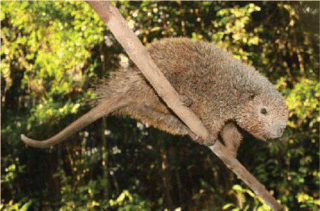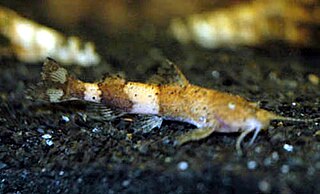 W
WErethistidae are a family of catfishes that originate from southern Asia. It includes about 26 species.
 W
WThe bristle-spined rat is an arboreal rodent from Atlantic forest in eastern Brazil. Also known as the bristle-spined porcupine or thin-spined porcupine, it is the only member of the genus Chaetomys and the subfamily Chaetomyinae. It was officially described in 1818, but rarely sighted since, until December 1986, when two specimens - one a pregnant female - were found in the vicinity of Valencia in Bahia. Since then it has been recorded at several localities in eastern Brazil, from Sergipe to Espírito Santo, but it remains rare and threatened due to habitat loss, poaching and roadkills.
 W
WThe prehensile-tailed porcupines or coendous are found in Central and South America. Two other formerly recognized Neotropical tree porcupine genera, Echinoprocta and Sphiggurus, have been subsumed into Coendou, since Sphiggurus was shown by genetic studies to be polyphyletic, while Echinoprocta nested within Coendou.
 W
WConta conta, the Conta catfish, is a species of South Asian river catfish. This species grows to a length of 7.8 centimetres (3.1 in) TL.
 W
WThe stump-tailed porcupine is a species of rodent in the family Erethizontidae. It is found mainly in Colombia, with a few records from Ecuador.
 W
WErethistes is a genus of South Asian river catfishes.
 W
WErethistes pusillus is a species of South Asian river catfish native to India, Bangladesh and Myanmar where it is mostly found in hill streams. This species prefers muddy portions of rivers that are overgrown with vegetation. This species grows to a length of 4.2 centimetres (1.7 in) SL. It is kept in tropical aquaria, but its occurrence in the aquarium trade is very rare.
 W
WThe North American porcupine, also known as the Canadian porcupine, is a large rodent in the New World porcupine family. It is the second largest rodent in North America, behind the North American beaver. The porcupine is a caviomorph rodent whose ancestors crossed the Atlantic from Africa to Brazil 30 million years ago, and then migrated to North America during the Great American Interchange after the Isthmus of Panama rose 3 million years ago.
 W
WHara is a genus of South Asian river catfishes native to South Asia from India to Myanmar.
 W
WHara hara is a species of South Asian river catfish that occurs in Bangladesh, China, India, Myanmar and Nepal. This species grows to a length of 13.0 centimetres (5.1 in) TL.
 W
WHara jerdoni, also known as the Sylhet Hara, Asian Stone Catfish, or Dwarf Anchor Catfish, is a species of South Asian river catfish native to northeastern India and Bangladesh. This species grows to a length of 4 centimetres (1.6 in) TL. It is sometimes seen in the aquarium trade.
 W
WPseudolaguvia is a genus of South Asian river catfishes. These species inhabit hill streams and large rivers. P. tenebricosa is found in fast running, clear water; the river has a sandy bottom and numerous rocks and boulders and aquatic vegetation is absent. P. inornata is from clear, shallow, moderately flowing streams with a predominantly sandy bottom. P. muricata is found in clear, shallow, slow-flowing streams with a mixed substrate of sand and detritus; these fish are found amongst detritus in areas with current. P. ferula is also found in swift flowing waters with a mixed rocky/sandy bottom.